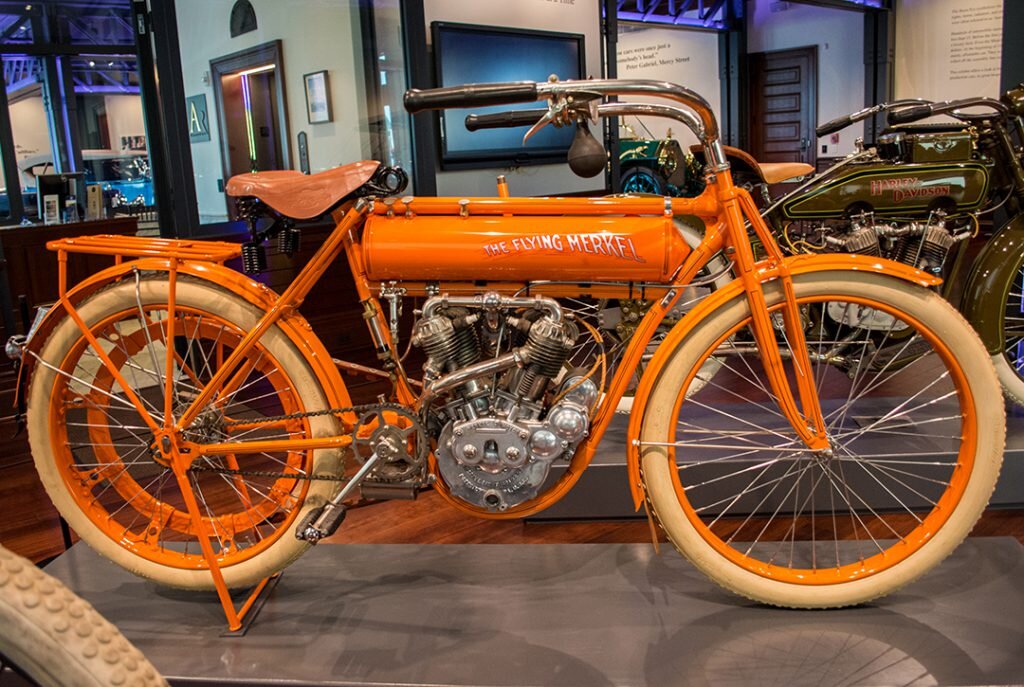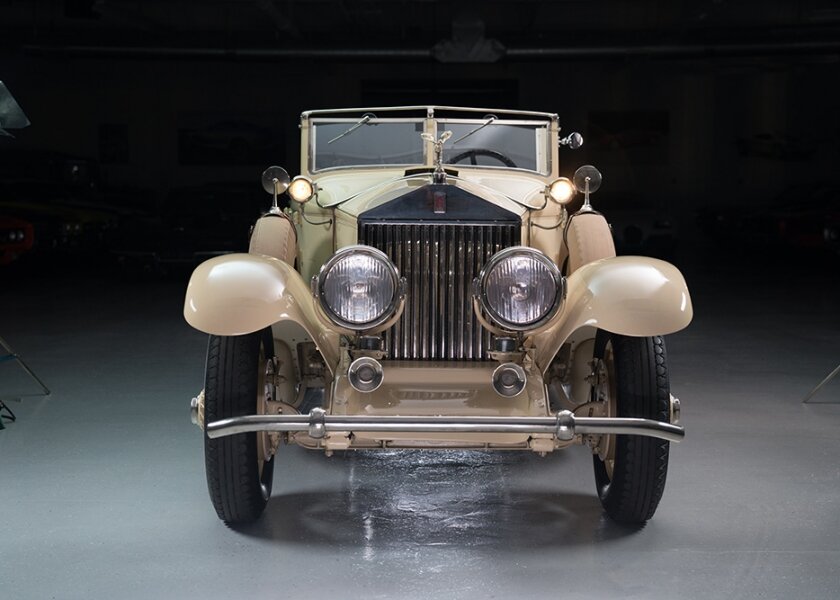1911 Flying Merkel
Specifications
Drivetrain: 2-cylinder
Displacement: Engine 884 cc or 997 cc
Horsepower: 6 or 7 hp
Transmission: 2-speed, 28 degrees V Belt, with adjustable front pulley
A Little History
The Flying Merkel was a production of the Middletown, Ohio-based Merkel company, founded in 1902 by Joe Merkel. An engine designer originally, Joe Merkel offered the first two-cylinder motorcycle engine in 1910. In 1911, the company trademark was changed to “Flying Merkel” and its products coated in a bright, shiny orange paint, later dubbed “Merkel orange.” With the onset of World War I and under increased competition, production ended in 1917.
The Design
With its ubiquitous Merkel orange paint and distinctive tank shape, this motorcycle includes
all the hallmarks of pioneering Merkel design: mono-shock rear suspension, ball bearings rather than bronze bushings in the engine, a cam-actuated intake valve and a throttle-controlled engine oiler.
Did You Know?
Amongst the many innovations of the Flying Merkel was the spring front fork, patented by Joe Merkel as a “truss fork,” a forerunner of the modern telescopic front fork. The Flying Merkel had an automatically dripping oil feeder, a unique characteristic that was later copied by Indian and Harley-Davidson.
In 1914, the Flying Merkel won the National Endurance Run from Chicago to St. Louis.




















